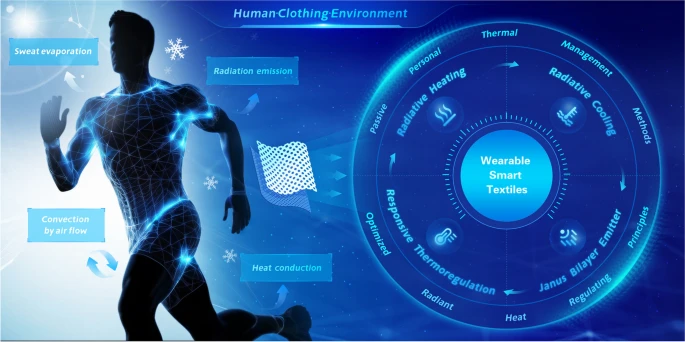
Abstract
Personal thermal management (PTM) is an important topic that holds great potential for enhancing human thermal comfort and optimizing energy efficiency, that typically relies on clothing and textiles. However, traditional textiles fail to adjust human thermal loss at low and high temperatures, no longer satisfy the soaring needs of dynamic heat dissipation due to diversified environmental operation. Recent research has seen significant advancements in smart thermal radiative textiles, which are driven by the booming progress in material-oriented and energy-oriented science and technology. These textiles endow the PTM systems with the efficient modulation of human body temperature and wearable comfortability, demonstrating considerable promise due to their rapid conversion efficiency of radiant heat. Here, we primarily introduce the fundamental concepts of heat transfer as well as the radiant heat regulating principles based on smart textiles. Subsequently, different regulation functionalities of smart textiles, consisting of radiative cooling, radiative heating, and smart textile systems for radiative heating and cooling are demonstrated in detail. Finally, the current obstacles and prospective solutions for smart radiation-controlled textiles are proposed to enhance future thermal management technologies, giving prominence to functional innovations and commercial incubation.
Highlights
• The intricate interplay between thermal models and design principles on functionality for smart textiles are discussed.
• The in-depth approaches for wearable smart textiles of radiative cooling, heating, and thermoregulatory systems are presented.
• The prospects and obstacles of smart textiles are summarized, paving a promising road to personal thermal management.


